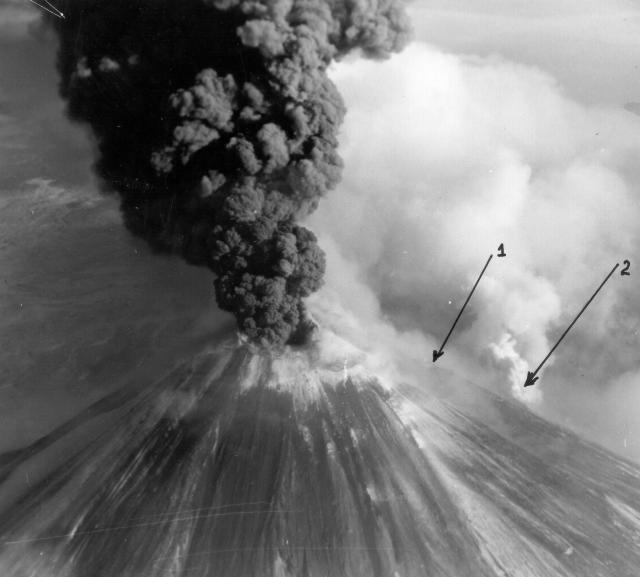Report on Klyuchevskoy (Russia) — March 1990
Bulletin of the Global Volcanism Network, vol. 15, no. 3 (March 1990)
Managing Editor: Lindsay McClelland.
Klyuchevskoy (Russia) Strong summit tephra eruption; basaltic lava from SE flank vent
Please cite this report as:
Global Volcanism Program, 1990. Report on Klyuchevskoy (Russia) (McClelland, L., ed.). Bulletin of the Global Volcanism Network, 15:3. Smithsonian Institution. https://doi.org/10.5479/si.GVP.BGVN199003-300260
Klyuchevskoy
Russia
56.056°N, 160.642°E; summit elev. 4754 m
All times are local (unless otherwise noted)
During an overflight by geologists on 2 February, vigorous ash emission fed a large eruption column that rose to ~5 km height and had a basal diameter of ~400-600 m (figure 3). Individual ash bursts were visible at the base of the column, although ash emission appeared to be continuous. A new vent was noted at 4,500 m elev on the NE slope of the Apakhonchich valley, on the upper SE flank. Vapor jets 200-300 m high were distinctly visible above this vent. A subsidiary vent downslope (at 3,970 m elev) fed basaltic lava flows. An ash plume extended 60-80 km E. The ashfall area on 2 February was ~1,600 km2.
Images from the NOAA 10 and 11 polar orbiting satellites showed several plumes from Kliuchevskoi. On 22 February at 1548, a thin plume extended ~80 km SE. A plume was next visible on 10 March at 0956. Although obscured by weather clouds a short distance ENE of the volcano, it formed a distinct cold area on the infrared image, indicating that it was at relatively high altitude. On 12 March at 0335, a very thin plume stretched 15-20 km NE from the Kliuchevskoi area, and on 15 March at 0942, a small diffuse plume extended S from the volcano. A thin plume extended 250 km NE on 3 April at 0903. Weather clouds . . . may have obscured additional eruptive activity.
Geological Summary. Klyuchevskoy is the highest and most active volcano on the Kamchatka Peninsula. Since its origin about 6,000 years ago, this symmetrical, basaltic stratovolcano has produced frequent moderate-volume explosive and effusive eruptions without major periods of inactivity. It rises above a saddle NE of Kamen volcano and lies SE of the broad Ushkovsky massif. More than 100 flank eruptions have occurred during approximately the past 3,000 years, with most lateral craters and cones occurring along radial fissures between the unconfined NE-to-SE flanks of the conical volcano between 500 and 3,600 m elevation. Eruptions recorded since the late 17th century have resulted in frequent changes to the morphology of the 700-m-wide summit crater. These eruptions over the past 400 years have originated primarily from the summit crater, but have also included numerous major explosive and effusive eruptions from flank craters.
Information Contacts: B. Ivanov, IV; W. Gould, NOAA/NESDIS.


